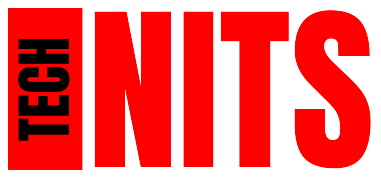In the digital age, music streaming platforms have revolutionized how we listen to and discover music. Among these, Spotify has emerged as a leader, not just for its extensive music library, but for its personalized approach to user experience. One of the more intriguing aspects of Spotify’s personalization is the concept known as Spotify DNA. But what exactly is Spotify DNA, and how does it give users unique insights into their musical habits? This article delves into what Spotify DNA means, how it works, and why it has become an essential tool for music lovers.
What Is Spotify DNA?
Spotify DNA refers to the data-driven analysis of a user’s listening habits. Much like genetic DNA that defines who we are biologically, Spotify DNA is a metaphor for the unique “musical fingerprint” that Spotify creates based on your interaction with its platform. This concept is built on complex algorithms that collect and process information about the songs, artists, genres, and playlists you engage with. The result is a comprehensive overview of your music preferences and tendencies.
How Spotify DNA Works
Spotify DNA is generated using Spotify’s proprietary data-gathering tools, which track user behavior and preferences. Here’s how it works:
- Data Collection: Spotify continuously records data whenever you stream music, such as song selections, frequency of plays, skips, and likes. It also tracks the duration you spend listening to different genres and artists.
- Algorithmic Analysis: Once enough data is collected, Spotify’s machine learning algorithms analyze patterns in your listening behavior. This helps Spotify categorize your music tastes into different genres and subgenres.
- Profile Creation: With the analysis complete, Spotify constructs a “DNA profile” that represents your unique musical identity. This profile may include insights into your top genres, artists, and even the moods or tempos you prefer.
The culmination of these processes is a snapshot of your Spotify DNA, which can be accessed through various tools and features, such as the popular “Wrapped” campaign that Spotify releases annually.
What Can Your Spotify DNA Tell You?
Your Spotify DNA is more than just a reflection of your music library; it’s a deep dive into your listening habits that can reveal:
- Top Genres and Artists: See which genres and artists you gravitate towards most. Whether you’re a fan of indie rock, classical music, or K-pop, your Spotify DNA identifies these trends.
- Listening Patterns: Your profile might show that you listen to high-energy music in the morning and prefer calm, acoustic songs in the evening. This pattern analysis helps you understand how music affects your daily life.
- Nostalgic Choices: If you often replay older hits or childhood favorites, Spotify DNA captures these nostalgic trends, illustrating the role past music plays in your current taste.
- Discoverability vs. Repeats: Spotify can tell you whether you prefer exploring new tracks or sticking with familiar songs. This insight is valuable for people wanting to expand their playlists with new music.
Why Is Spotify DNA Important?
Understanding your Spotify DNA can enrich your music experience in several ways:
- Enhanced Music Discovery: By recognizing your listening preferences, you can discover new music tailored to your tastes. Spotify uses your DNA profile to suggest new songs, playlists, and artists you’re likely to enjoy.
- Curated Playlists: Spotify’s personalized playlists, like “Discover Weekly” and “Daily Mix,” use your DNA to create custom mixes that suit your current musical mood.
- Self-Reflection: Your music choices can say a lot about you. People often use music to express their emotions, reflect on their identity, or set a mood. By examining your Spotify DNA, you gain a better understanding of how your music choices align with your emotions and experiences.
- Social Sharing: The concept of Spotify DNA can be a fun conversation starter. Sharing your top genres, artists, or unique listening quirks with friends can foster connections based on mutual interests or discoveries.
Accessing Your Spotify DNA
While Spotify’s annual “Wrapped” feature provides users with an overview of their music habits from the past year, there are other tools and platforms designed to give you more detailed insights into your Spotify DNA. Third-party sites, such as Stats for Spotify or Obscurify, offer additional data points and visual representations of your listening profile. These tools analyze your most-streamed songs, highlight your favorite artists, and even compare your music taste with global trends.
To access these insights:
- Visit a reliable third-party site and log in with your Spotify account credentials.
- Allow access to your Spotify data to generate a detailed breakdown of your music habits.
- Review your personalized profile to explore new ways to engage with your music collection.
The Future of Personalized Music Insights
The concept of Spotify DNA highlights the growing importance of data-driven personalization in the streaming industry. With rapid advancements in artificial intelligence and data analysis, the future promises even more tailored music experiences. Imagine a platform that not only knows your favorite genres but can predict your next musical obsession before you even discover it yourself.
As Spotify and other streaming services continue to refine their algorithms, users can look forward to more intuitive recommendations and interactive music experiences. These innovations aim to keep listeners engaged, introduce them to new music, and foster a deeper connection with the art they love.
In conclusion, Spotify DNA offers music lovers a unique opportunity to delve into their listening habits and preferences. By understanding your Spotify DNA, you can enhance your music discovery process, engage more deeply with your favorite genres, and enjoy a more personalized listening experience. Whether you’re a casual listener or a music aficionado, exploring your Spotify DNA opens up new ways to appreciate and share your love for music.


